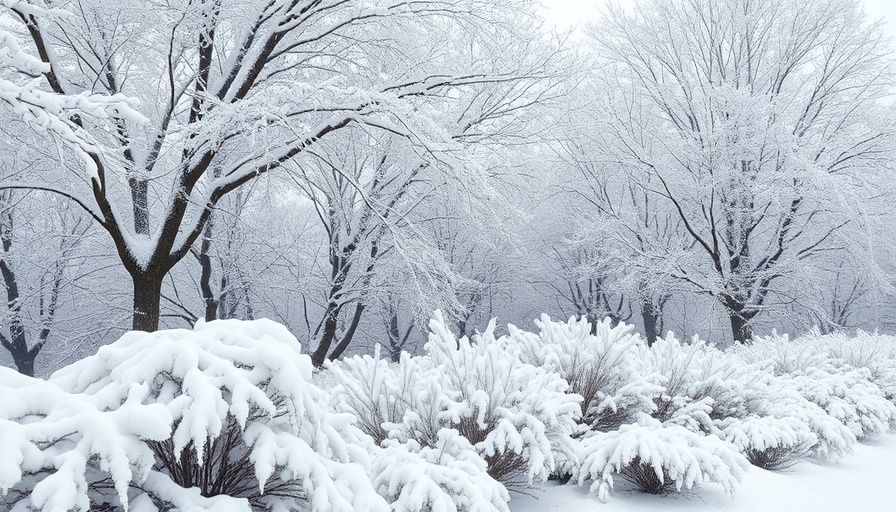
Understanding Winter Damage: Why It Matters
Winter can be a harsh time for your outdoor landscape. As temperatures dip and snowfall increases, trees, shrubs, and grass are often subjected to stressors that can lead to damage. Understanding winter damage is vital for maintaining the health and aesthetics of commercial properties. Identifying specific issues early on enables property owners and managers to take corrective action before small nuisances escalate into larger problems.
Common Types of Winter Damage to Landscape
Winter can inflict various types of damage on your commercial landscape. For example, heavy snow and ice can break branches and damage shrubs, while hungry critters like deer and rabbits may nibble barks and branches to survive. Additionally, excessive use of ice melt products can lead to soil issues affecting grass health. If not addressed, these issues can impact the longevity and visual appeal of your landscape.
Assessing Tree and Shrub Damage
Once spring arrives, it's crucial to assess the state of your landscape thoroughly. Begin by checking for broken branches or signs of stress in trees and shrubs, such as peeling bark. Pruning and timely interventions can mitigate safety hazards posed by dangling branches. Declining trees might need special care, including bark treatment and nutrient supplementation, to aid their recovery.
The Role of Snow Removal in Preventing Damage
Snow removal isn't just about clearing pathways; it's also about protecting your landscape. Planning where snow is piled can prevent unwanted damage to shrubs. Work closely with your snow removal service to establish designated areas for dumping snow. Having a plan in place can prevent unintentional harm to your plants, eliminating problems before they arise.
Combatting Winter Burn on Evergreens
Winter burn occurs when evergreen foliage loses moisture faster than it can be replenished. Signs include brown, crispy needles. Proper irrigation before frost sets in and applying anti-desiccant sprays can help protect your evergreens. Keeping an eye on soil moisture levels can directly influence the resilience of your outdoor plants during harsh winters.
Taking Care of Damaged Grass
When dealing with winter-damaged grass, the first step is identifying affected areas. A common issue includes patches of dead or yellowing grass due to frost damage or road salt exposure. Raking up debris and aerating the soil allows oxygen, water, and nutrients to penetrate effectively. Following appropriate re-seeding or sodding is essential for restoring your lawn after winter. Fertilizing in conjunction with these measures can significantly speed up recovery.
Proactive Measures for Future Winters
While damage from winter weather may be inevitable, proactive measures can minimize its impact on your landscape. Regularly prune trees to strengthen them against the weight of snow and ice. Engage in seasonal landscape maintenance during fall, such as applying mulches and ensuring proper drainage, to set the stage for a healthier landscape come spring.
Conclusion: Prepare and Protect
Assessing and managing winter damage to trees, shrubs, and grass on commercial properties is integral to landscape maintenance. By taking proactive steps now and engaging with professionals, property owners can safeguard their investments and enjoy thriving landscapes for years to come.
Call to Action: Don't wait for your commercial landscape to show signs of winter damage. Contact a local landscaping professional today to set up a seasonal maintenance plan and ensure your property stays vibrant through every season. Remember, an ounce of prevention is worth a pound of cure!
 Add Row
Add Row  Add
Add 




Write A Comment